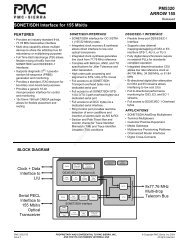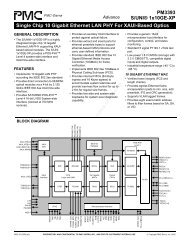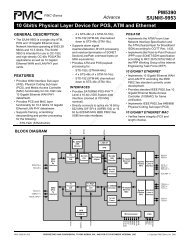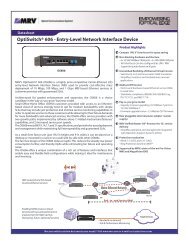Architecture, Engineering, and Related Services [NAICS 5413]
Architecture, Engineering, and Related Services [NAICS 5413]
Architecture, Engineering, and Related Services [NAICS 5413]
You also want an ePaper? Increase the reach of your titles
YUMPU automatically turns print PDFs into web optimized ePapers that Google loves.
(McFarlan et al., 1983)<br />
Since the 80’s, Geographic Information Systems or GIS have been used to help aggregate <strong>and</strong><br />
visualize environmental data by overlaying it against a map. Once a strategic resource available only<br />
to large firms, this technology is now commonplace in the industry <strong>and</strong> is used by most L<strong>and</strong>scape<br />
Architects who work on any projects larger than single-site design <strong>and</strong> even still, single-site<br />
designers may find GIS useful (Personal communication with Margaret Bryant, May 5 2012). Typical<br />
GIS applications have involved mapping environmental <strong>and</strong> physical conditions atop a map of an area<br />
as a means of underst<strong>and</strong>ing the environment before trying to manipulate it. Increasingly, there is<br />
potential in the industry to use GIS along with demographic <strong>and</strong> social data to grow the role of<br />
L<strong>and</strong>scape <strong>Architecture</strong> to include community growth, public outreach <strong>and</strong> participatory design<br />
(ASLA, Digital Technology, 2011).<br />
A firm’s ability to visualize data <strong>and</strong> demonstrate plans to a community is an important strategy for<br />
improving business as well as reputation <strong>and</strong> for this reason, although GIS is not a strategic<br />
differentiator in <strong>and</strong> of itself, it certainly facilitates improving public relations by helping to visualize<br />
data.<br />
IS RECOMMENDATIONS<br />
The author of this section recommends that the L<strong>and</strong>scape <strong>Architecture</strong> industry pay close attention<br />
to the 3-D printing <strong>and</strong> holographic technology. Although these technologies are still years away<br />
from perfection <strong>and</strong> mainstream adoption, this represents the ideal time to begin planning for such a<br />
time when they are commercially available. Both 3-D printing <strong>and</strong> holographic technology have the<br />
potential to help visualize data <strong>and</strong> design even more so than 3-D modeling does today. 3-D<br />
modeling is no longer a strategic differentiator but there may come a time in the not so distant future<br />
that 3-D printing <strong>and</strong> holograms may help differentiate cutting edge l<strong>and</strong>scape architecture firms<br />
from their competitors.<br />
REFERENCES<br />
American Society of L<strong>and</strong>scape Architects(ASLA). (2011). Digital Technology. Retrieved April 30,<br />
2012, from http://www.asla.org/PPNIndividualHome.aspxid=1320<br />
18


![Architecture, Engineering, and Related Services [NAICS 5413]](https://img.yumpu.com/34014793/19/500x640/architecture-engineering-and-related-services-naics-5413.jpg)









